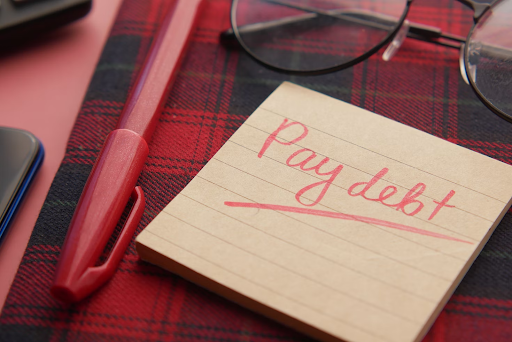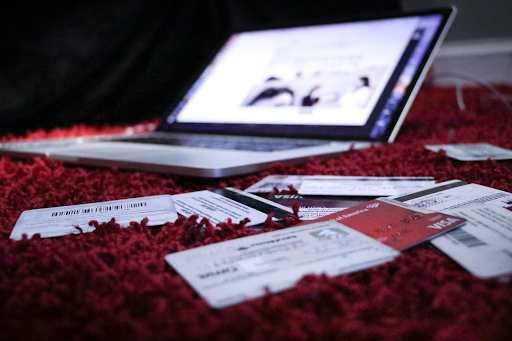
Types of Consumer Debt (Forbruksgjeld) & Preventing it in the Future
Consumer debt is the amount owed by an individual to another and includes debts incurred on purchases that cannot be resold and/or don’t increase in value over time, as well as credit card balances. It’s essential to comprehend consumer debt, as it can have a substantial effect on your financial stability and even determine whether you qualify for bankruptcy protection and how to prevent problems in the future.
Credit Card Debt
Credit cards can be a form of consumer debt that can become an issue for many. They offer great convenience when making purchases and earning rewards, but they may cause serious issues if used excessively or not paid off in full each month.
Credit cards come in many forms, such as prepaid debit cards, charge cards and prepaid gift cards. Unlike debit cards which use your bank’s balance to purchase items, credit cards have a credit limit issued by the card issuer which then goes towards covering purchases made with your card – with interest being charged if you don’t pay off all of the balance each month.
Your credit limit can be as high as your checking account balance, and it’s subject to various fees like finance charges and interest. These costs are added onto the bill for credit card users, leading to more overall interest payments than what would be charged with traditional loans.
Some credit cards allow cardholders to extend a grace period before interest is charged on unpaid balances, though this varies from card to card and may not be available for all purchases. Some companies provide secured credit cards which require the cardholder to put down an initial deposit as collateral in case they miss payments.
Another type of credit card is a revolving line of credit, which means the amount you can borrow changes each month depending on how much you use your card. Usually, these cards are issued to customers with excellent credit histories and/or who can afford to pay off their balance in full each month.
Debt accumulation from credit cards has become an issue in recent years due to rising interest rates and increased consumer spending. According to Transunion, the average credit card balance rose to $5,474 in fall of last year – an increase of 13% from 2021.

Auto Loan Debt
Auto loans are a common source of consumer debt. People borrow money to purchase a new car and then make monthly payments with interest added to the principal amount owed. Once all expenses have been covered, borrowers will own their vehicle outright.
Over the past decade, Americans with auto loans have seen their average debt load skyrocket. Now, total auto loan debt in America totals nearly $1.4 trillion – more than triple what it was in 2006.
When you take out an auto loan, the lender has the right to use your vehicle as collateral for repayment. If you miss a payment, they have the power to repossess and sell it in order to recoup their money – leading to foreclosure or bankruptcy for those on low incomes.
While most borrowers make their loan payments on time, a few are late. Every borrower is different, for example refinansieringavforbruksgjeld.com so do your research about lay payments. This usually indicates they’re struggling financially or lack the cash on hand to make payments, so lots of companies have things in place to help.
These borrowers are particularly vulnerable to debt accumulation and may have difficulty paying their bills due to a low credit score. Credit card debt may provide them with more manageability since they only need to make the minimum payment and stay current with payments.
Auto loans can be a financial nightmare for borrowers if they receive high-interest loans that exceed their income and credit score eligibility. That was the case for one Maryland resident who received a $12,000 auto loan that ballooned to more than 15 percent of their monthly income within six months, according to data CR analyzed in its investigation into consumer auto debt in America.
Consumers need to be informed about the car loan they’re getting and the terms they can expect. This knowledge helps them make better-informed decisions about their financial futures and avoid being taken advantage of by unscrupulous lenders.

Student Loan Debt
Student loans can be a source of consumer debt that can be difficult for some borrowers to repay. Unfortunately, they also pose an increased risk for delinquency and default, especially among those with low incomes and no four-year college degree.
Repaying a student loan depends on several factors, such as the interest rate, how much they graduate with, and how long they plan to pay off the loan. That is why it’s essential to understand what a loan is and how it functions before applying for one.
However, some borrowers have been mistreated by servicers. Companies often misrepresent their options and place borrowers into forbearance periods that accumulate interest instead of providing them with more affordable payments.
Many student loan borrowers are unaware that they qualify for income-driven repayment plans. These programs can be a lifesaver for those struggling to make ends meet with their student loan debt payments.
Unfortunately, an increasing number of borrowers are behind on their student loan payments. This is partly due to the temporary suspension of payments on all federal student loans due to the COVID-19 pandemic, but also because more people than ever before are taking out more student loans and pursuing higher education.
This rise in student loan borrowing poses a concern for both students and taxpayers. A recent report revealed that those with lower incomes, as well as those without a four-year degree, are more likely to struggle financially to make payments on their loans – especially those who attended for-profit colleges or less selective public or private non-profit institutions.

Personal Loan Debt
Personal loans, which can be used to finance a major purchase or consolidate debt, are one of the five major forms of consumer debt. As of the third quarter of 2022, Americans owed $210 billion in personal loans – up from $192 billion in the previous quarter and $156 billion one year prior.
These loans can be a convenient way to finance an acquisition or make large payments, but they also carry risks if not paid off completely. The amount of interest charged depends on both the lender’s credit score and how long the loan lasts; moreover, lenders typically require repayment within six months or less after being approved.
Borrowers often turn to personal loans for major purchases or debt repayment. They can also be utilized in times of emergency such as medical bills that arise unexpectedly or an urgent roof replacement. When determining if a personal loan is suitable for you, consider your financial situation, goals and intended use.
Another advantage of personal loans is they usually feature a fixed rate that stays constant over the loan’s term, so borrowers can rest assured knowing their monthly payments won’t change. However, lenders may charge origination fees ranging from 1 percent to 6 percent of the total loan amount; so be sure to review these fees prior to selecting your lender.
Some lenders may charge penalties for late or inadequate payments. These costs can accumulate quickly, increasing the cost of borrowing in the long run.
Consumer debt is expected to continue increasing as more borrowers take out personal loans. While some of this debt is the result of the recession, most is due to an influx of new products being introduced.





